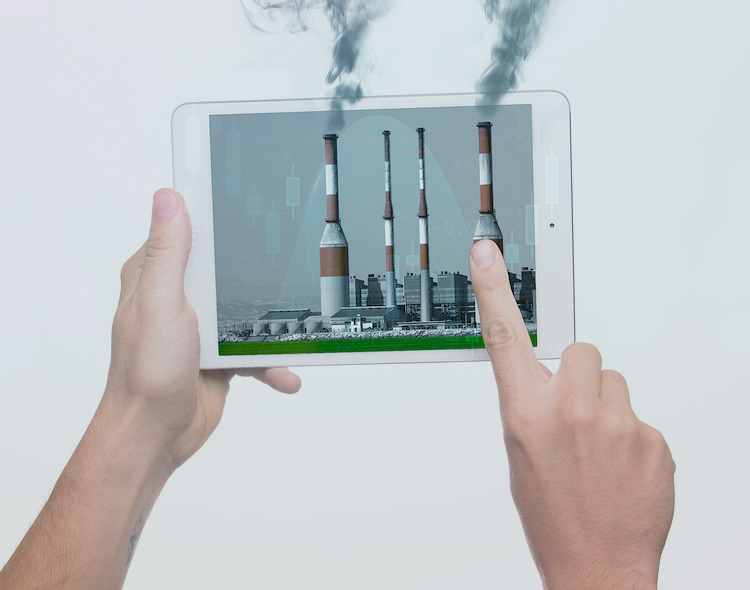What Is 4.0 Industry?
The phrase “industry 4.0” (i4.0) is used by people all around the world to describe how IoT-driven technology, improved automation, and augmented decision-making have come together. The traditional value chain has been altered by these next-generation technologies, which have created new revenue streams and changed the way industrial businesses operate. For the first time, an industrial revolution may be anticipated rather than simply observed, allowing firms to anticipate changes rather of only responding to unanticipated disturbances. And as they approach i4.0 change, businesses today should be thinking along those lines. With the use of technologies like the internet of things (IoT), cloud computing, cyber-physical systems, and AI, Industry 4.0 aims to increase industrial efficiency. Industry 4.0 is primarily driven by AI, which automates intelligent systems to self-monitor, self-interpret, self-diagnose, and self-analyze. Industries will be able to predict their maintenance requirements and improve their efficiency thanks to AI technologies like machine learning (ML), deep learning (DL), natural language processing (NLP), and computer vision (CV).
From Industry 1.0, the era of mechanization, through Industry 2.0, the era of electrification, to Industry 3.0, the era of automation, to the current era of cyber-physical systems, which includes features from both CPS and IoT, we may observe a transition. The top companies in the “industry 4.0” market are General Electric (US), Siemens (Germany), Honeywell International (US), ABB (Switzerland), Emerson Electric (US), 3D Systems (US), Advantech (Taiwan), Basler (Germany), Cisco Systems (US), Cognex Corporation (US), Daifuku (Japan), IBM (US), Intel (US), John Bean Technologies Corporation (US), Nvidia (US), Stratasys (France).
Read: Global Fintech Interview with Jitin Bhasin, Founder & CEO at SaveIN
Why Is i4.0 Such a Disruptor?
- Market Prediction: $165.5 Billion by 2026 from an estimated -$64.9 billion in 2021 Using a CAGR of 20.6%
covered geographically include North America, APAC, Europe, and the rest of the world. - According to the analysis, the market for Industry 4.0 would probably expand between 2021 and 2028 at a CAGR of more than 19.4%.
- The market for Industry 4.0 was worth around US$ 84.59 billion in 2020, and it is anticipated to reach US$ 334.18 billion by 2028. The market is expected to grow significantly over the coming years as a result of a number of driving factors.
i4.0 Constituents.
- Connectivity and integration across all domains are necessary for the complete realization of smart production. The cloud makes that feasible. Also, the cloud makes it possible to process the normally vast amount of data being stored and evaluated more quickly and affordably. For small- and medium-sized manufacturers who can appropriately assess their demands and scale as their firm grows, cloud computing can significantly lower startup costs.
- Manufacturers can now develop virtual replicas of processes, production lines, factories, and supply chains thanks to Industry 4.0’s digital twins technology. Data is collected from IoT sensors, gadgets, PLCs, and other internet-connected things to construct a digital twin. Digital twins are a tool that manufacturers can employ to create new goods, streamline workflows, and boost production. Manufacturers can test changes to the process to find ways to reduce downtime or increase capacity by modelling a production process, for instance.
- Independent Although the employment of robots in realistic communications is still in its early stages, we have observed an increase in their use in clear assembly frameworks for tasks like materials development (as in the Cox Target Media office) and item stock control, for example. We anticipate increased use of mechanical technology by leading print organizations, as well as improved execution and communication with individuals and frameworks.
- Edge computing reduces the amount of time between the delivery of information and the need for a response. For instance, a security or quality concern may require constant attentive attention to the equipment. Depending on the organization’s dependability, the time required to transport data from the plant floor to the project cloud and back again may be unreasonably long. Also, using edge processing means that data stays close to its source, reducing security risks.
- Manufacturing firms can fully benefit from the abundance of information created not just on the factory floor but also across all of their business units, as well as from partners and outside sources, thanks to AI and machine learning. Artificial intelligence (AI) and machine learning can automate tasks and corporate processes while providing consistency to experiences. For instance, when engaging in creative activity, modern machines tend to split apart. Using the data obtained from these resources can help businesses perform foresight assistance in light of AI calculations, resulting in more uptime and greater efficiency.
- A key component of intelligent technology for i4.0 is the Internet of Things (IoT). Industrial facility floor equipment is equipped with sensors to communicate with other web-enabled devices, allowing for the collection, analysis, and exchange of a wealth of crucial data.
- The other side of the sphere is cybersecurity. Producing firms have just recently come to understand the value of cybersecurity. The same connectivity of operational (OT) equipment in a factory or field, however, will guard against malicious intrusions and enable the efficient operation of the entire system. When transitioning to Industry 4.0, it’s important to think about a cybersecurity-positive strategy that includes Technology. Increased performance, adaptability, and cost efficiency will be the results of this.
What Solutions might i4.0 reveal?
To deliver the highly specialized, cross-functional talents that maximize performance, who do you need to involve in your i4.0 future? The C-suite is facing a broad business challenge with the personnel dilemma rather than just an HR problem. Due to the increasing adoption of industrial automation, the worldwide industry 4.0 market will experience impressive growth in the years to come.
